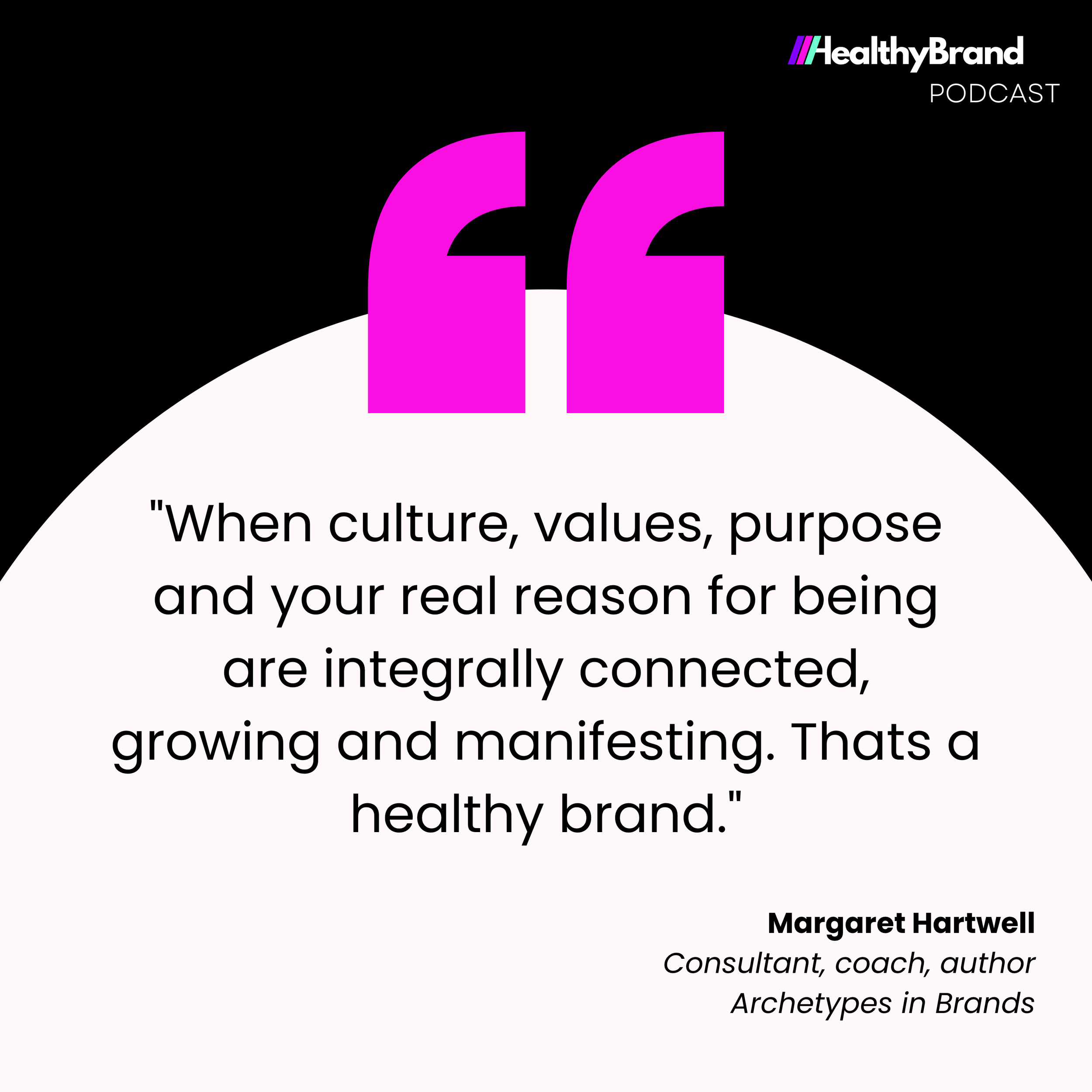Using the Power of Archetypes to Transform Organizations & Build Brands with Margaret Hartwell
Read time: 3.5 min
Get episode summaries delivered directly to your inbox HERE
Have you ever wondered why the same character types, themes and settings recur across time and place in stories, myths, and literature? What can we learn from archetypes and how do we apply it?
Margaret Hartwell is a creative catalyst for organizations and author. She helps innovation teams, CEOs, and emerging leaders with transformation, culture, team development, and anytime their teams get stuck. In this episode, we talked about what are archetypes and how do we leverage them when building brands.
APPLE PODCAST | SPOTIFY | STITCHER
Don’t see your podcast player? Click HERE
In this episode, we explore a variety of topics:
Archetypes are a means to emotional magnetism
The rule of three in brand archetypes
The pitfalls: too meta, trying to be perfect, stuck in a style guide
Stereotypes are reductive and archetypes are expansive
Don’t use archetypes as personas – focus on the organization
Techniques to warm up a group for an archetype workshop
The critical litmus test for any engagement
KEY LESSONS
Archetypes are a means to emotional magnetism
What are archetypes? Margaret gives us a reading from the Oxford Concise Dictionary:
Archetypes are symbols, themes, settings, or character types that recur in different times and places in myth, literature, folklore, dreams and rituals. And they appear so frequently or prominently as to suggest that they embody some essential element of the universal human experience.
In the broadest of strokes, Margaret shares with us three principles of brand archetypes:
Everybody has access to the archetypal field - it’s a part of our collective unconscious so we all have an innate understanding of it.
Archetypes are a way for us to understand ourselves and we can’t help but have an emotional reaction to it.
Every culture has archetypal underpinnings whether or not we are conscious aware.
From talking with Margaret, a powerful perspective about archetypal work is that it is an exercise in lateral thinking, helping an organization to its truth without being bogged down by rational analysis.
If you go in through this side door, that's not about anyone being right or wrong and you're talking from an archetypical story perspective, you start to unearth aspirations and preferences of the business, which ultimately leads them to a more confident place of understanding what they stand for
The rule of three in brand archetypes
When trying to figure out brand archetypes, it’s really important to not use it as stereotypes. Margaret offers a simple way to steer clear from it:
Stereotypes are reductionistic and archetypes are expansionistic… take the classic example of the soccer mum, is that reductionistic or expansionistic?… it is a slippery slope to stereotyping when you use archetypes for personas.
When developing an archetype for brands, there is a magic number.
Three. It proves to be a magic number. It gives enough breadth and scope without brutally confusing everyone… you can then start to bring in the symbols and metaphors of this new character that includes all aspects from the three different archetypes.
By having a process where you create and develop this character, then express it creatively across the organization and then put it out in the world to see how it works, it guarantees that the brand archetype is never stale and irrelevant.
Avoid the typical pitfalls of archetypal work
1/ Too self-important or academic
People getting too meta. They are not doing the inner work themselves to understand how these energies are alive in them, but just talking about them. You lose the whole reason that you're doing this: to find an emotional relatedness and an emotional through line between the business, the brand, and the person that they're serving
2/ Aiming for perfection
You’ve got to keep it living and breathing. Trying to be perfect I think is a really big problem, as opposed to recognizing that there's a vulnerability in all of us and that's what actually can be connecting us as well.
3/ Adopting archetypes as a label
Unexpressed biases by the use of labels and turning an archetype perspective into a label. I've seen this more in personal branding than I have in corporate, where people will say, I'm a caregiver, and I'm like, no, you're not <laugh>.
Conclusion
Archetypes are powerful if you can wield it in the world of brand and anytime you need to better understand and influence human behavior. But beware of its pitfalls, else it becomes a limitation, a reductionistic effort, rather than an expansionistic one!
Learn more about Margaret:
https://www.archetypesinbranding.com/
Other Resources:
Archetypes in Branding by Margaret Hartwell and Joshua C. Chen
The Hero and the Outlaw by Margeret Mark and Carol S. Pearson
Ways I can help you:
Subscribe to Healthy Brand Mondays: Leverage brand thinking to accelerate your growth
Download free guides and tools: Learn from my years of experience as a brand strategist
Work with me: Be a podcast guest or hire my services for your brand


